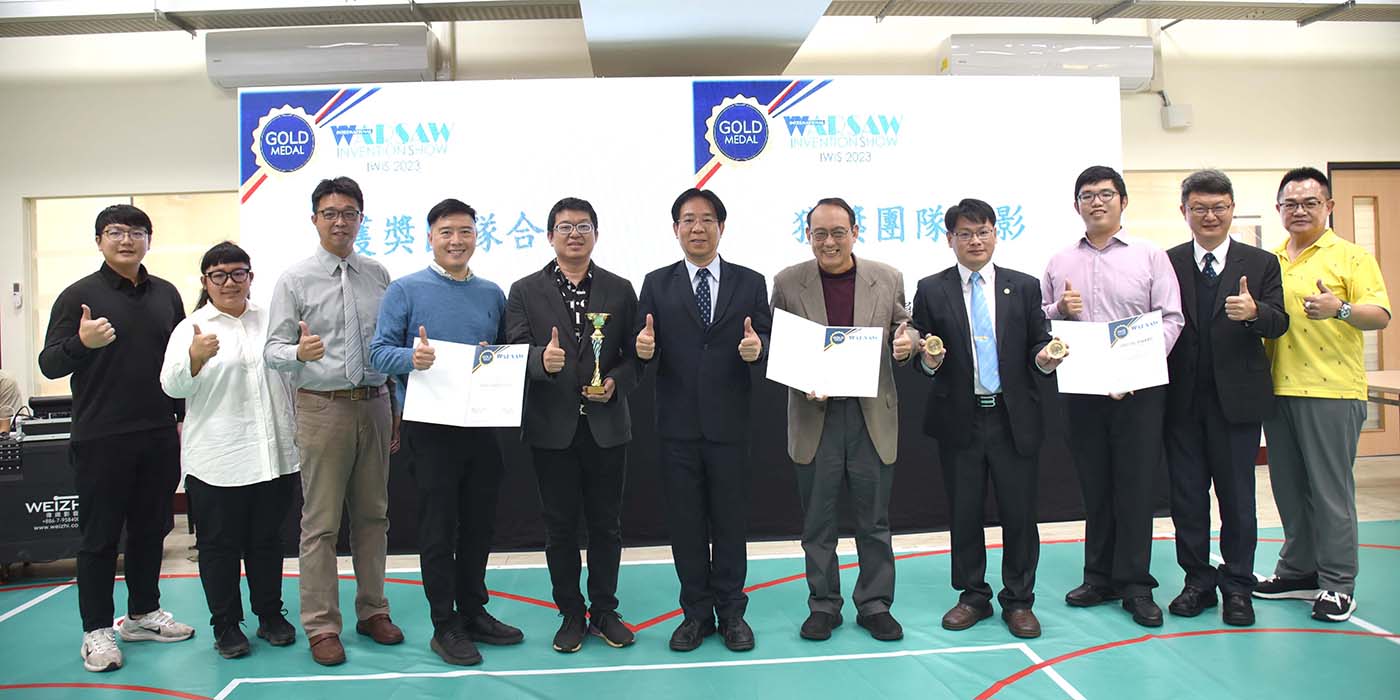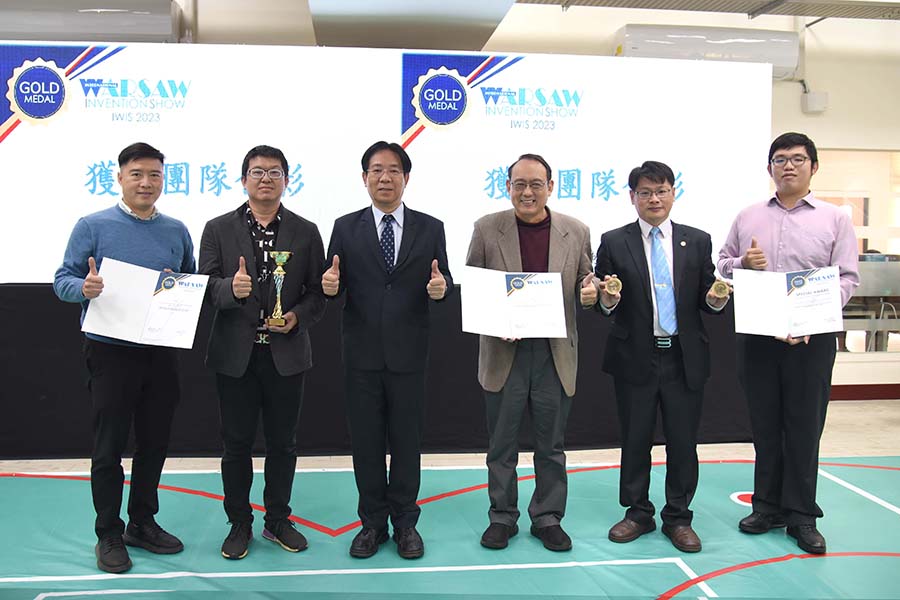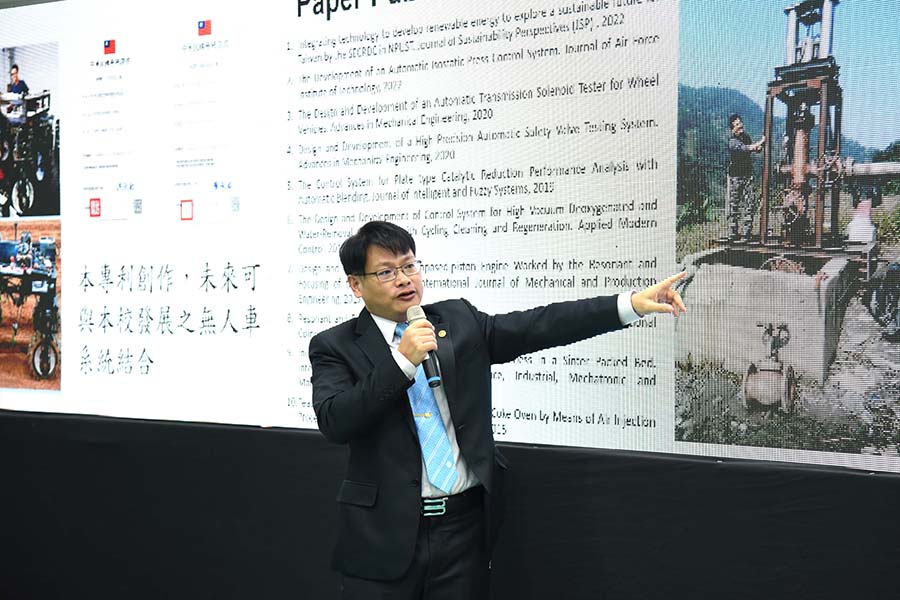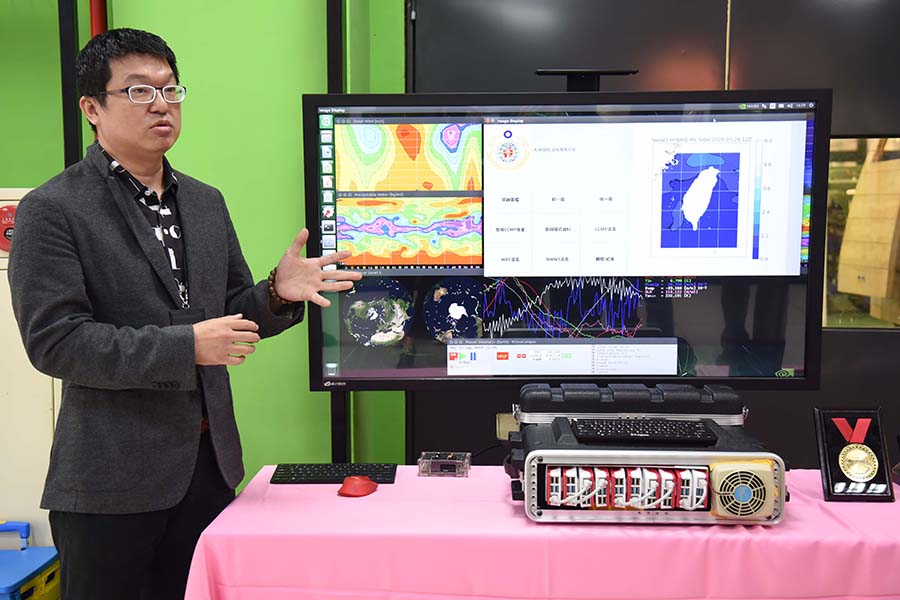The 17th International Warsaw Invention Show was held at the Warsaw University of Science and Technology from December 12 to 14 (2023), with fifteen countries participating in the event. This show is the second largest international exhibition of inventions in the European Union. The teams representing Taiwan at the show saw considerable success, winning 14 gold medals and 9 silver medals in total. Among the winning entries, two works submitted by a joint team from National Pingtung University of Science and Technology (NPUST) and the Taiwan Air Force and Navy won Gold Medal Awards and a Special Contribution Award.
Back in Taiwan, a special results presentation was organized on January 10, 2024 at the NPUST Smart Agriculture Center to showcase the winning works. Headed up by NPUST Professor Hudson Hsu, the team of inventors included Professor Chang-Hsien Tai and Assistant Professor Shang Han Tsai, also from NPUST, Associate Professor Ming-Sen Hu and Associate Professor Nan-Ching Yeh of the Air Force Academy, Dr. Chih Ying Chen of Academia Sinica, industry expert Mr. You-Lin Su, and members of the Naval Meteorological & Oceanographic Office. The two inventions responsible for the gold medals and Special Contribution award included a “Low-Carbon Supersonic Shockwave Soil Loosening and Caving Device” and a “Miniature Mobile Deep-Learning Sea Surface Wave Height Prediction System”.
At the results presentation, NPUST President Chin-Lung Chang said “I am very honored to report the good news that our team had a double gold medal win at the 17th International Warsaw Invention Show. Their two inventions show that NPUST is making outstanding advancements in environmental sustainability and AI technology. Thanks to all the participating members and partners of the R&D team, our achievements were able to stand out on the international stage. We will continue to work hard to make contributions to technological development and environmental sustainability.”
One of the award-winning works, the “Low-carbon Supersonic Shock Wave Soil Loosening and Caving Device”, uses shockwave technology to loosen soil and increase porosity. The effect it has allows plant roots to benefit from improved ventilation and nutrient absorption, and, in-turn, reduces labor and carbon emissions. The technology can also be used in such military applications as cave, tunnel, or trench construction. The destructive power of the shockwaves can also be used to kill fire ants—making for a tool that can help control the environment without reliance upon polluting agents. For this reason, the invention was not only awarded the gold medal award, but also the “Special Contribution Award” for its ESG and environmental sustainability applications. The other gold medal invention, the “Miniature Mobile Deep-Learning Sea Surface Wave Height Prediction System”, uses innovative AI deep-learning to analyze data from meteorological satellites and weather stations. The system is able to meet the needs of naval operations by predicting wind speed and wave height for the next six days. Unlike previous-created AI prediction models, this technology is able to receive satellite and weather station data at any time, self-correct mathematical operation modules in real time, and thus predict conditions more accurately.







